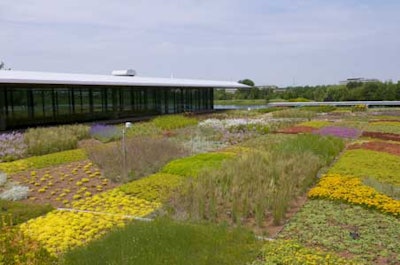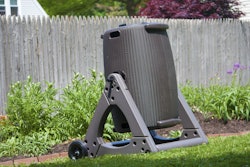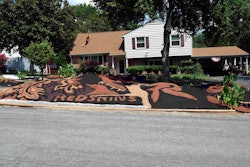 The Chicago Botanic Garden used two rooftop gardens to determine the adaptability of plants for green roofs.
The Chicago Botanic Garden used two rooftop gardens to determine the adaptability of plants for green roofs.Photo: Wikipedia
The Chicago Botanic Garden has released a study about the best plants to grow on a green roof.
Green roofs are well-known for their benefits and these days can be found just about anywhere, from residential neighborhoods to baseball stadiums. They have become particularly popular in urban areas where space is limited.
Green roofs are capable of cooling the building they are on, as well as reducing rainwater runoff. They also increase biodiversity.
“Green roofs are being developed for greater interaction with people, whether as pleasure spaces, urban sanctuaries, or for growing food crops,” writes Richard Hawke in Plant Evaluation Notes.
In September 2009, the Chicago Botanic Garden opened the Daniel F. and Ada L. Rice Plant Conservation Science Center, a 38,000-square foot LEED Gold-rated research and laboratory center. The building is topped by two 8,000-square foot green roofs designed by Oehem, van Sweden Landscape Architecture.
The center’s green roofs function as a living laboratory and also are used to test the adaptability of plants in a rooftop environment. The Chicago Botanic Garden’s ultimate goal is to develop a diverse and extensive list of plants that can grow on rooftops.
According to Ed and Lucie Snodgrass, authors of Green Roof Plants, ideal green roof plants should be “low-growing, shallow-rooted perennial plants that are heat, cold, sun, wind, drought, salt, insect and disease tolerant.”
On top of all of this, there is the growing demand for low-maintenance plants that are also aesthetically pleasing.
“When choosing plants for a green roof it is important to understand that a green roof is not the equivalent of a typical landscape elevated to the top of a building; therefore, appropriate consideration must be given to a plant’s growth habit, native ecosystem, and cultural needs, to name a few factors,” writes Hawke.
The study consisted of 216 herbaceous and woody plants with a root depth of 4 to 8 inches. When the study was completed last year, 78 species received top ratings while 14 percent of the 216 plants died between 2009 and 2011.
All told, 30,568 plants were alive when the study ended in 2014 out of 41,561 that originally were planted on the green roofs.
The following nine plants received a five-star rating:
- Antennaria dioica (Common name: Catsfoot)
- Calamintha nepeta ssp. (Common name: Lesser Calamint)
- Juniperus chinensis var. sargentil ‘Viridis’ (Common name: Chinese juniper)
- Phlox subulata ‘Apple Blossom’
- Phlox subulata ‘Emerald Blue’
- Phlox subulata ‘Snowflake’
- Rhus aromatic “Gro-Low’
- Sporobolus heterolepis (Common name: Prairie Dropseed)
- Sporobolus heterolepis ‘Tara’ (Common name: Tara Prairie Dropseed)
For a full list of the plants used and their performances, click here and scroll to the bottom to see the report.











